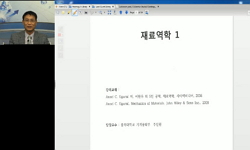Twenty six pressure models of high rise buildings with various cross-sections including twisted models were tested in a boundary layer wind tunnel. The cross-sections were triangular, square, pentagon, hexagon, octagon, dodecagon, circular, and clover...
http://chineseinput.net/에서 pinyin(병음)방식으로 중국어를 변환할 수 있습니다.
변환된 중국어를 복사하여 사용하시면 됩니다.
- 中文 을 입력하시려면 zhongwen을 입력하시고 space를누르시면됩니다.
- 北京 을 입력하시려면 beijing을 입력하시고 space를 누르시면 됩니다.
https://www.riss.kr/link?id=A102075661
- 저자
- 발행기관
- 학술지명
- 권호사항
-
발행연도
2013
-
작성언어
English
- 주제어
-
등재정보
SCOPUS
-
자료형태
학술저널
-
수록면
229-244(16쪽)
- DOI식별코드
- 제공처
-
0
상세조회 -
0
다운로드
부가정보
다국어 초록 (Multilingual Abstract)
Twenty six pressure models of high rise buildings with various cross-sections including twisted models were tested in a boundary layer wind tunnel. The cross-sections were triangular, square, pentagon, hexagon, octagon, dodecagon, circular, and clover. This study investigates variations in peak pressures, and effects of various cross-sections and twist angles on peak pressures. To study the effects of various configurations and twist angles on peak pressures in detail, maximum positive and minimum negative peak pressures at each measurement point of the building for all wind directions are presented and discussed. The results show that peak pressures greatly depend on building cross-section and twist angle.
동일학술지(권/호) 다른 논문
-
Field Measurements of the New CCTV Tower in Beijing
- Council on Tall Building and Urban Habitat Korea
- Xu, Y.L.
- 2013
- SCOPUS
-
Performance of Tall Buildings in Urban Zones: Lessons Learned from a Decade of Full-Scale Monitoring
- Council on Tall Building and Urban Habitat Korea
- Kijewski-Correa, T.
- 2013
- SCOPUS
-
Brâncuşi Endless Column: A Masterpiece of Art and Engineering
- Council on Tall Building and Urban Habitat Korea
- Solari, Giovanni
- 2013
- SCOPUS
-
Aerodynamic and Flow Characteristics of Tall Buildings with Various Unconventional Configurations
- Council on Tall Building and Urban Habitat Korea
- Tanaka, Hideyuki
- 2013
- SCOPUS





 ScienceON
ScienceON



